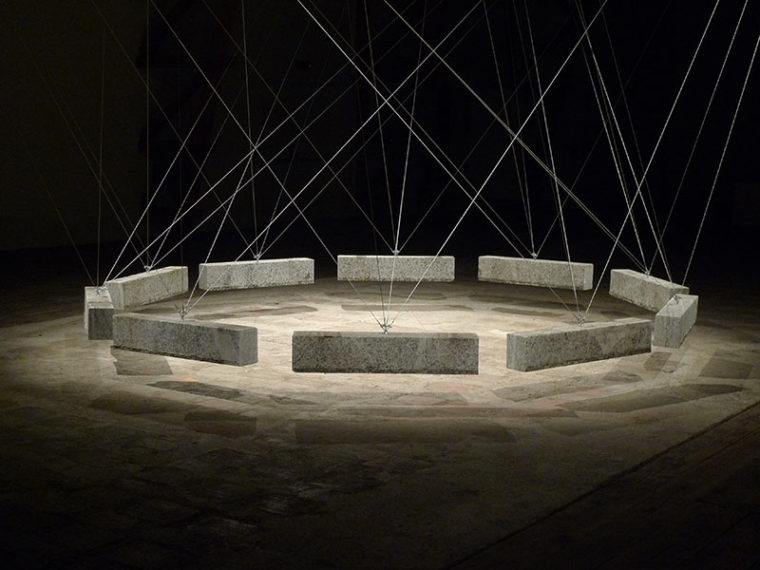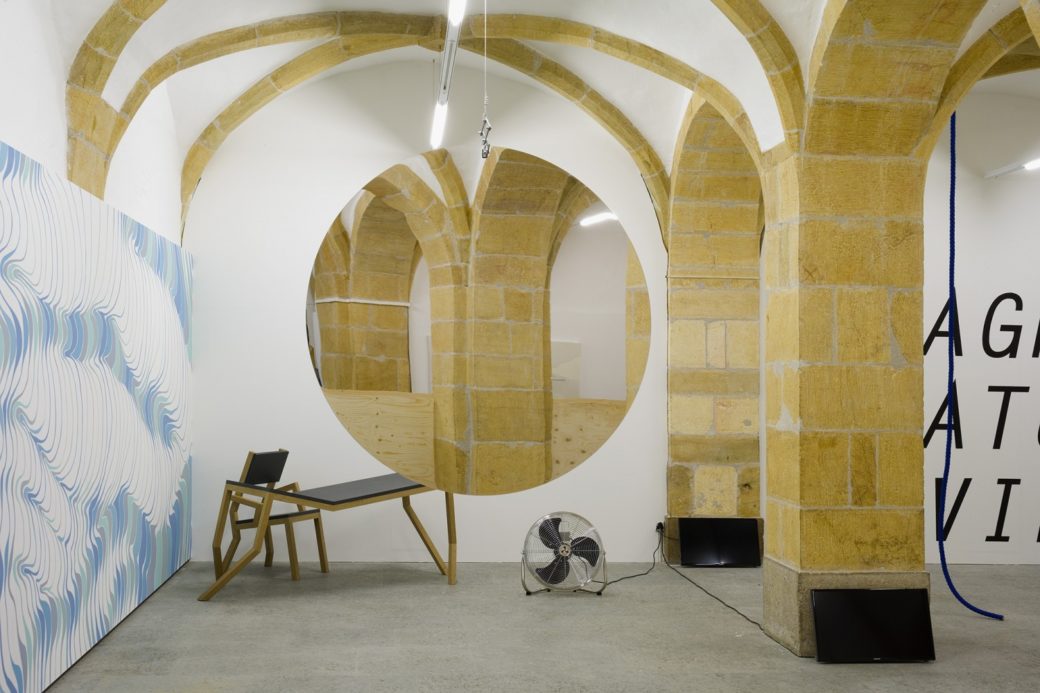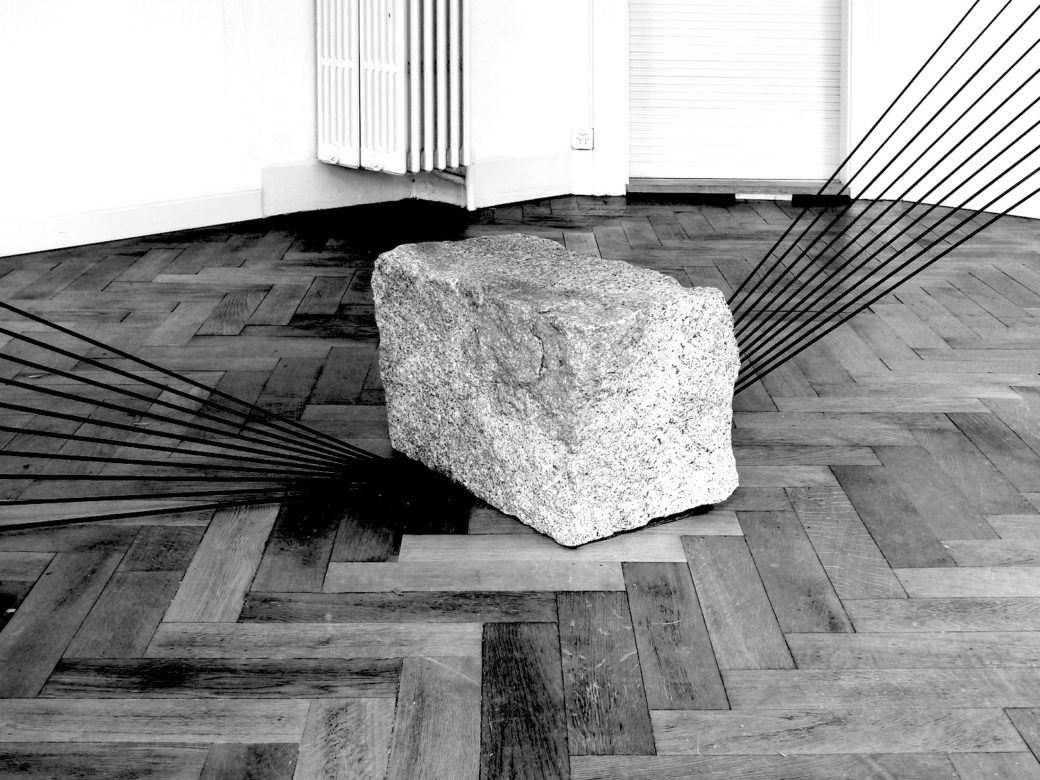Offline Matters: An Interview Series is co-presented with No Fun Mag, a membership newsletter by Jess Henderson, author of the book Offline Matters: The Less-Digital Guide to Creative Work.
In our fifth interview of this series, Jess speaks with sculptor Simon Deppierraz on the power of non-digital art especially given the times we’re living in. For Simon, these moments further clarified the implications of physical art and its ability to speak further than a digital piece.
Hi Simon, your work as an artist uses offline experiences of space, physics, force, and static harmonies to generate sensations in the viewer. Many of these works have almost surreal elements.
For instance, the structures you mention that seemingly held by air, that appear to overcome gravitational forces, or works that change their geometry constantly when walked around.
Are there some dialogues to share here on what you wish to say through these interactions between viewer and object, perception and reality?
I love the moment of balance between something hovering, being suspended, and its potential fall. It creates a certain energy when you’re experiencing it in a physical space. This is what I want to bring to life for the viewer, an (impossible) sense of suspension in time.

“What interests me is observing how certain ‘propositions’ put the spectator under stress – regardless of whether the material is actually heavy or not.”
— Simon Deppierraz
For example, I installed two brass rods cut into points, like arrows, each weighing 30kg in a desacralized church. The work was called Providentia. It was fun to see how adults didn’t walk underneath them, but children did.
The potential danger was real, but above all it was the form in combination with the title that created these conditions. You know, a chandelier could be extremely heavy and no one would be concerned about that.

Another work, which was a public commission for a school where I hung a fake stone over a playground, created the same reaction. The children weren’t afraid but the teachers were. That piece was called Exercice de Gravité (an exercise in gravity). It was only because of the object’s stone-like shape that people sensed danger.

In a time where digital art is popular, what do you see as provisional from non-digital forms and experiences? I’m also wondering if you’re exploring more digital elements in your work or if you see this as irrelevant to your practice and narratives?
I believe that I believe more in objects than in images. I need material, shape, weight, temperature, colours, sensuality… It’s for these reasons that digital art doesn’t speak to me very much.
That said, your work spans from lithographic prints and drawings to sculptural works and large scale installations. Are there common threads across them all, or do you use different mediums for different reasons and themes?
Drawings and lithographs, which are two-dimensional works, I often use in reference to construction, architecture, or to seek a form of shift, of optical play, which are a bidirectional way of making the spectator experience a physical sensation. These 2D forms are still in effect creating the same sensations as my 3D works. They are definitely in conversation with each other.

During the lockdown, many artists reported a change in their practices. This ranged from feeling a calling to experiment with new mediums, to different levels of energy or new topics they desired to pursue. Were there any changes for you?
I was lucky enough not to be locked up at home and was able to go to my studio. Though, it’s true that it was a strange time. I wasn’t able to find the serenity to work on my drawings or lithography. So I consciously decided that I was going to instead invest a little in mechanical machinery instead and develop that aspect of my work.

Can you tell us about your time spent in the studio. Is this a practice of disconnection from screens and life online? Is it a time of tech-free solitude, or are you integrating online research (for instance) whilst working on something physical?
I have always mixed the offline researching of materials with online work. It’s simultaneous. The computer is an integral part of what I do – whether it is for researching references, thematic research, making technical drawings and plans, sending emails, processing photographic archival documents, etc…
For example, my lithography projects are mainly based on drawings first made on the computer. Then comes the phase of making tests on the press. For sculptures, this can start from the computer or, on the contrary, a test model can lead me to feed the project with online research. In this way, I can’t say I have a typical day. It’s always a round trip between these different moments.
“For me, I use time offline as a moment to stop creating. A moment to break away from the space of possibilities that is my permanent research ground.”

Your work as a fine artist, preparing major solo shows and concepting/realising new works to be sold, seems quite different to how many artists operate their livings today–posting on Instagram, concentrating on getting followers, communicating with curators this way, and maintaining a visible presence of productivity and recognition via social media.
Do you think these differences outwardly suggest that there are different categories of artists (as there always have been, even pre-internet) who take different strategies in how they approach their careers?
There have always been artists who were more, or less, strategic. This was the case pre-internet too. Today, the over-communication of work is enormous. I personally make a difference between an exhibition and an Instagram post.
The exhibition allows you to see the works in real life. For me this is an extremely important reality, simply because I love the physicality of art.

“What gets overlooked is that exhibitions involve a whole system of curators, critics, galleries, other artists, who create an environment in which we can evolve and share – which happens offline.”
Social media can help to communicate and give visibility in a broader way, and this is good. But when creation is happening just for the sake, only to be conveyed on social networks… well, this is empty to me. I’m very traditional about this.

I can see this traditionalist in you from your absence of social profiles. Have you ever felt the need to use social media in relation to your work?
I was quick to make a website. At the time (I can’t remember the exact year) it was the means of communication. Today, the whole status of having, or even the function of a website seems a bit lost.
I still believe that it is a strong base for archives and presentation, because a website is designed in a deliberate way. We make personal decisions about how to present work.
I actually do have an Instagram, but I have difficulty using it. It feels like it should be a good complement since it allows you to push information, but I just don’t really like to look at art on that medium.

If you had any advice to give to new generations of artists reflecting on your experience over the years, what would be the message you think is important right now?
Every artist can write their own story.
You just have to be sincere.
To see more of Simon’s work, head here.

















